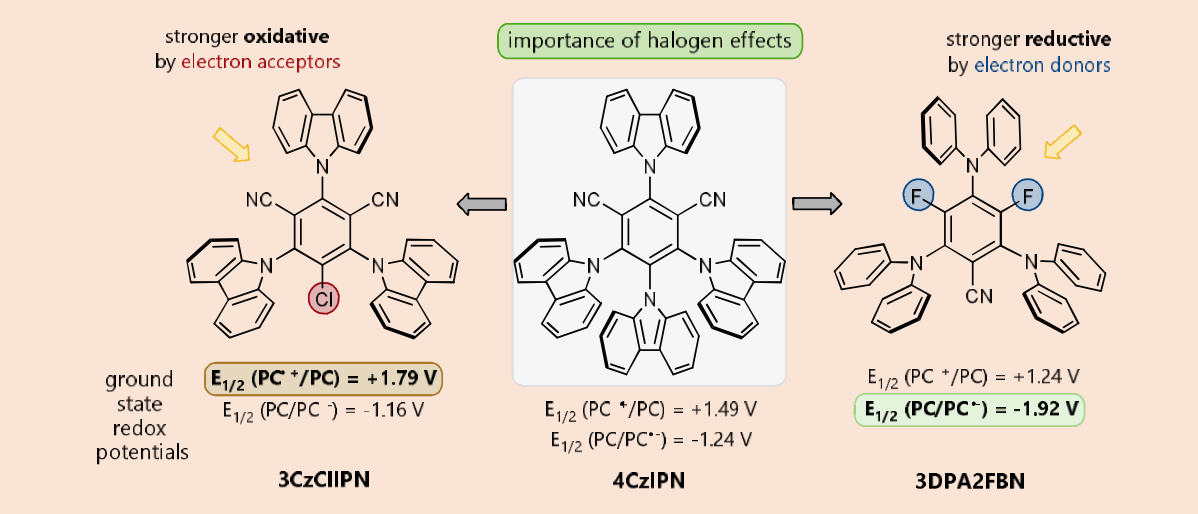Research Project 4
State of the art
- Visible light photocatalysis has become a vibrant area of research and has already changed the way how we think and actually do organic synthesis. However, most current methods rely on organometallic complex-based photocatalysts, where the central metal (Ir, Ru etc) is precious and expensive causing significant environmental footprints due to its terrestrial scarcity.
- Purely organic photocatalysts may provide a solution to broadly applicable, more sustainable photocatalytic syntheses, especially with view to scale-up processes.
- Reaching the same range of performance and robustness is challenging. By now the availability of generally applicable especially strongly oxidizing and strongly reducing photocatalysts is limited.
 Scheme 4. Successful examples of donor-acceptor dyes as photocatalysts.
Scheme 4. Successful examples of donor-acceptor dyes as photocatalysts.
Progress beyond the state of the art
- A series of cyanoarene-based donor acceptor dyes have recently been developed in our group and will be used as starting point to design tailor-made photocatalysts regarding their targeted properties as photoredox, energy transfer or atom transfer photocatalysts (Scheme 4).
- The introduction of halogen substituents has proven to be crucial to impact the basic properties of such photocatalysts.
- Apart from cyanoarenes a range of alternative donor/acceptor scaffolds will be tested to achieve a set of catalysts that may serve as sustainable surrogates for currently best performing organo- metallic photocatalysts.
Key Objectives & Expected Results
Performance Indicators
- At least two examples of strongly oxidative and reductive photocatalysts will be developed.
- A fundamental understanding of the donor/acceptor interplay in such DA-type photocatalysts will be developed based on a large structure-activity relationship study.
- Other photocatalytic transformations developed by the partners will be tested with the newly developed photocatalysts.





